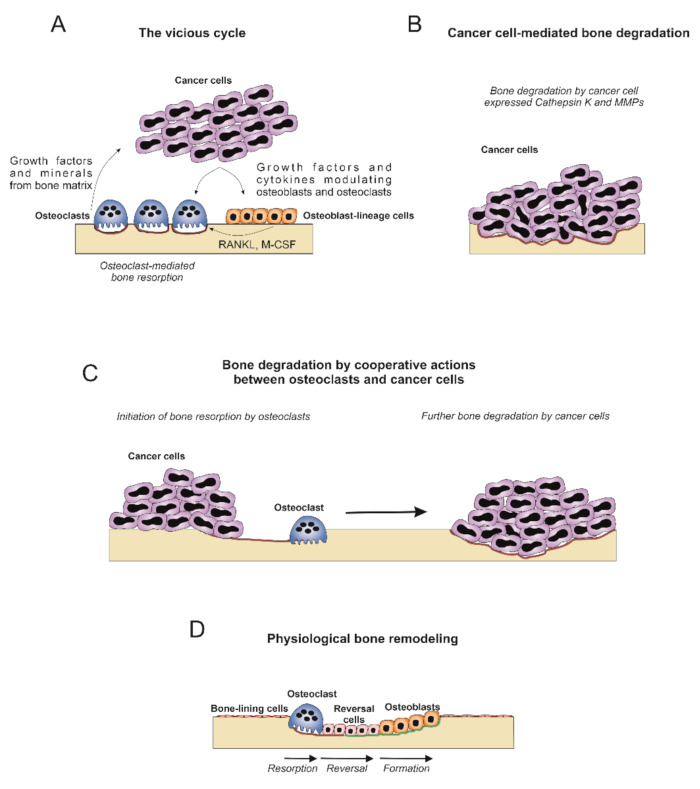Figure 2.
Three possible models of cancer-induced bone degradation. (A) In the vicious cycle model, cancer cells produce growth factors and cytokines that directly and indirectly stimulate exaggerated osteoclastogenesis and bone resorption. Growth factors and minerals released during osteoclast-mediated bone resorption further stimulate tumor growth. (B) In the model of cancer cell-mediated bone degradation, cancer cells are responsible for bone resorption through expression of collagenolytic proteases including Cathepsin K and MMPs. (C) Bone resorption is initiated by osteoclasts exposing eroded bone surfaces that attract cancer cells. These cancer cells will occupy zones of the eroded bone surface and contribute to further degradation through expression of collagenolytic enzymes. (D) Schematic representation of physiological bone remodeling. During the resorption phase, osteoclasts degrade the inorganic and organic bone component. Reversal cells in close contact with osteoclasts on eroded bone surfaces participate in degradation of the organic bone compartment and prepare the bone for the following formation phase. During the formation phase, osteoblasts deposit organic bone matrix that is subsequently mineralized.

